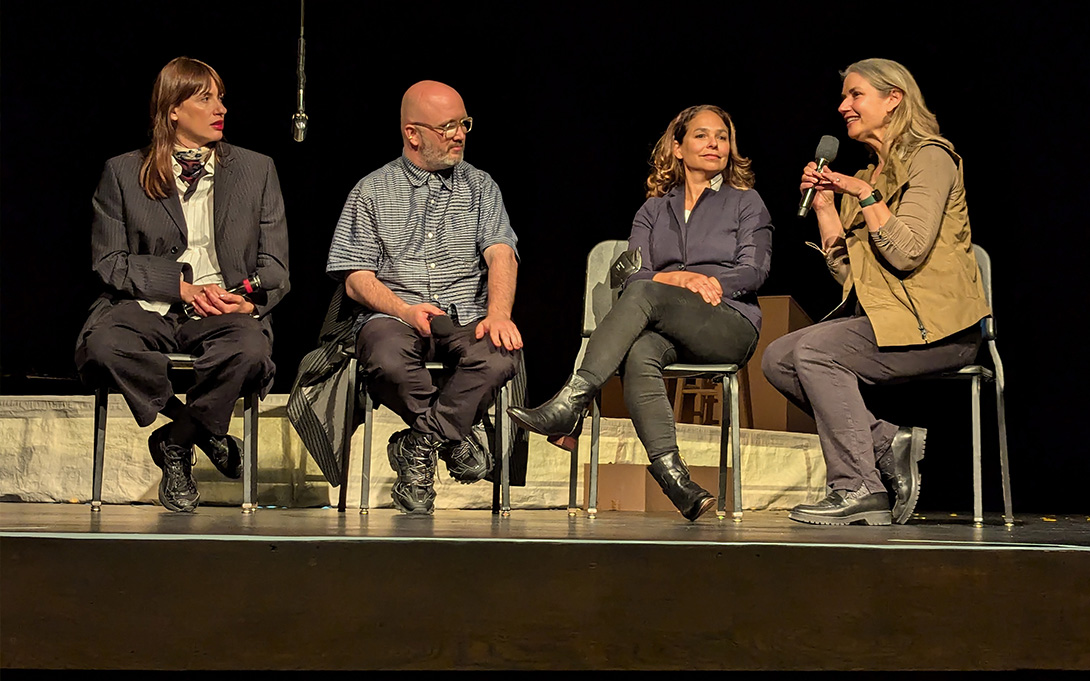
Five candidates, one winner. As audience members enter the theater, they are each handed a voting device which conveys their power to decide the outcome. Belgian theater group Ontroerend Goed created “Fight Night” in 2013 after a controversial right-wing politician, Bart De Wever, rose to power, resulting in an extended government shutdown. Ten years and countless performances across the world later, Fight Night’s relevance is only growing. The Ford School community gathered for a performance presented by the University Musical Society in late September.
Despite the show’s very specific origin story, it is not about a particular person or place, and neither does it discuss any explicit policy issue. Instead, the candidates speak to the audience in abstract, but simple language, eliminating the voters’ ability to slot themselves into a comfortable ideological position. In an exclusive Ford School Q-and-A after the show, moderated by faculty director of UMICH Votes and Democratic Engagement Jenna Bednar and Leadership Initiative faculty director Morela Hernandez, cast member Aurelie Lannoy said this vagueness allows for greater introspection: “We don’t talk about specific topics - never, so it’s broad enough for you to project your own political feelings.”
Angelo Tijssens, who helped write Fight Night and plays the debate moderator for much of the performance, displays a mixture of skepticism and admiration for the democratic process. On the one hand, he is worried about how easily people can be influenced by political rhetoric. He says most audiences across the world respond similarly to the show, demonstrating that, “If you manipulate people in the right way they’ll do the same [thing] everywhere, in every language.” At one point in the performance, Aurelie’s character gives a speech taken directly from a 1984 Ronald Reagan ad, invoking the possibility that “there is a bear in the woods” and we must prepare for it, just in case it is really there. Tijssens argues that this speech exemplifies a classic tactic for effective political manipulation, where a candidate lays out, “a possible fear or problem,” in order to claim, “I am your solution no matter what.”
On the other hand, Tijssens and Lannoy remain deeply optimistic and committed to democracy, even with all of its imperfections. If it is functioning correctly, Tijessens maintains, “democracy should be the peaceful version of just bashing each others’ brains out to see who gets to lead the other monkeys.” This is not the rosiest portrait of our political system. Nonetheless, Fight Night is structured to demonstrate that participating in the democratic process is the best way to make your voice heard.
At one point in the performance, a candidate invites participants who are “fed up” with the system to relinquish their voting devices, functionally limiting the electorate to the people who opt to retain them. For Tijssens, this scene illustrates that the true “tyranny of the majority” arises from the dangers of unequal participation - that important decisions of collective life and governance are determined by “who shows up” and agrees to take part. Even if our current system is “broken and…smells funny,” he says, “for now, there’s no other.”
Lannoy agrees: “this is the only system we have to make a difference - so we should use it.”
Written by Rebecca Coyne

